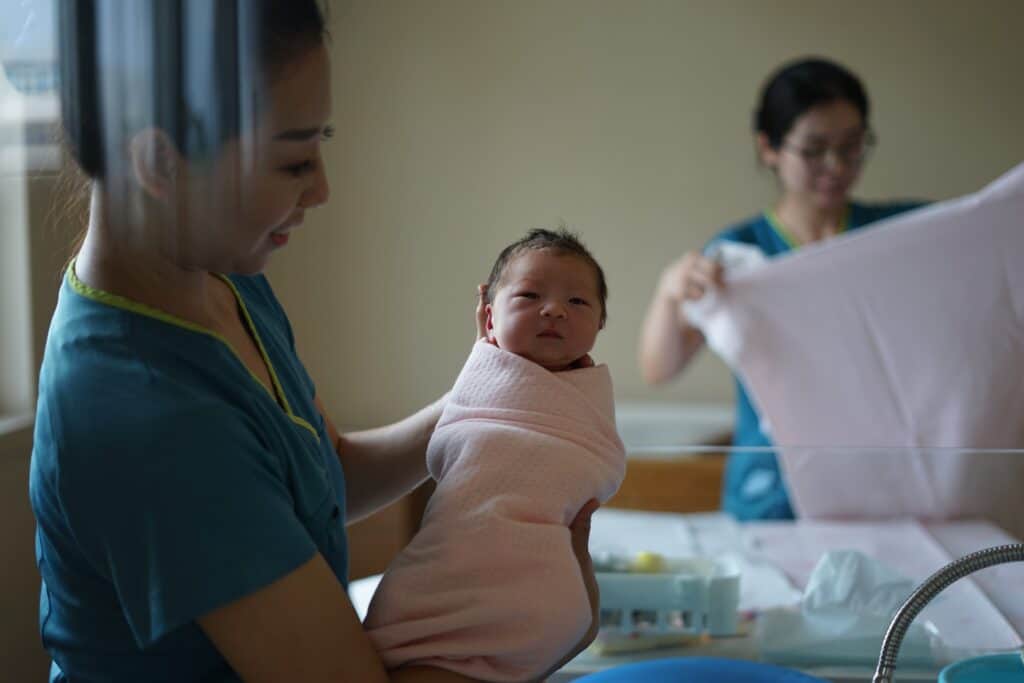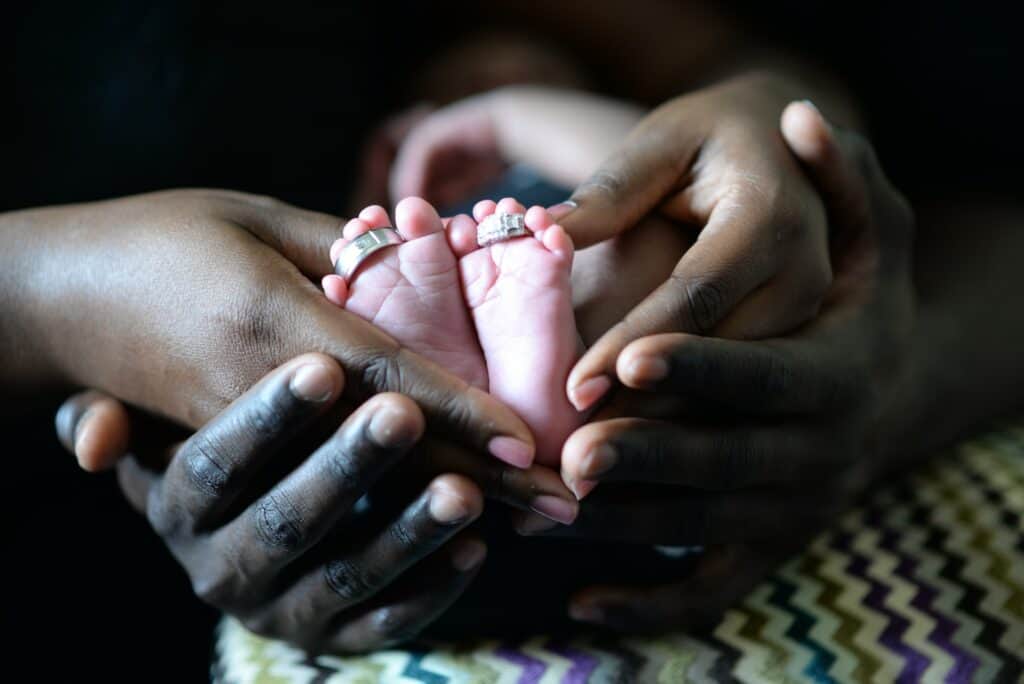Skin-to-skin contact has been shown to have numerous benefits for both newborns and parents, including improved bonding, regulation of body temperature, and increased breastfeeding success. However, some new parents have reported being charged for the privilege of holding their newborns immediately after birth. This has led to controversy and confusion surrounding hospital policies and insurance coverage for skin-to-skin contact.
Understanding Skin-to-Skin Contact
Skin-to-skin contact, also known as kangaroo care, involves placing a newborn directly on their parent’s bare chest immediately after birth. This practice has been shown to have numerous benefits, including improved bonding, regulation of body temperature, and increased breastfeeding success. It is recommended by many healthcare organizations, including the World Health Organization and the American Academy of Pediatrics.
The Controversy: Charging for Skin-to-Skin Contact
Despite the benefits of skin-to-skin contact, some hospitals have been accused of charging new parents for the privilege of holding their newborns immediately after birth. This has led to controversy and confusion surrounding hospital policies and insurance coverage for skin-to-skin contact. Some hospitals have defended the charges, citing the need for additional staffing and resources to ensure the safety of both the newborn and the parent during the skin-to-skin contact period. However, many parents and advocates argue that this practice is unfair and goes against the recommended standard of care.
Key Takeaways
- Skin-to-skin contact has numerous benefits for both newborns and parents.
- Some hospitals have been accused of charging new parents for skin-to-skin contact, leading to controversy and confusion.
- While some hospitals defend the charges, many parents and advocates argue that it goes against the recommended standard of care.
Understanding Skin-to-Skin Contact
Skin-to-skin contact is a practice that involves placing a newborn baby on the bare chest of the mother or father immediately after birth. It is also referred to as kangaroo care. This practice has been found to have numerous benefits for both the baby and the parent.
Skin-to-skin contact helps regulate the baby’s body temperature and breathing, stabilizes their heart rate, and promotes better sleep. It also helps the baby to bond with the parent and can lead to a more successful breastfeeding experience.
For the parent, skin-to-skin contact helps to reduce stress and anxiety, promotes the release of hormones that aid in milk production and bonding, and provides an opportunity for the parent to connect with their newborn.
While skin-to-skin contact is a common practice in many hospitals, some may charge an additional fee for it. It is important for parents to understand their hospital’s policies and any associated costs.
Overall, skin-to-skin contact is a beneficial practice that promotes bonding and improves outcomes for both the baby and parent.
The Controversy: Charging for Skin-to-Skin Contact
Skin-to-skin contact, also known as kangaroo care, is a practice where a newborn baby is placed naked against the mother’s bare chest, promoting bonding and providing numerous health benefits. However, there has been controversy surrounding the practice in some hospitals, where they charge for this contact.
The issue gained viral attention in 2016 when Ryan Grassley, a father from Utah, shared his hospital bill on Reddit, which included a $39.35 charge for skin-to-skin contact. The post sparked a public conversation about hospital fees and itemized bills, with many expressing shock and disbelief that hospitals would charge for such a basic and essential practice.
In response to the backlash, a hospital spokesperson explained that the charge was for the additional staffing required for the procedure and that it was optional. However, the internet was not convinced, and the hospital eventually decided to waive the fee.
While some hospitals have defended the charge, arguing that it covers the cost of additional staffing, others have recognized the importance of skin-to-skin contact and have eliminated the fee altogether. The controversy has highlighted the need for transparency in hospital billing and the importance of patients understanding their itemized bills.
In conclusion, charging for skin-to-skin contact has sparked controversy and raised questions about hospital billing practices. While some hospitals continue to charge for the practice, others have recognized its importance and have eliminated the fee.
The Role of the Nurse in Skin-to-Skin Contact

Skin-to-skin contact is a critical aspect of newborn care, and nurses play a crucial role in facilitating it. Nurses are responsible for ensuring that skin-to-skin contact occurs as soon as possible after delivery, and that it is maintained for an extended period.
The nurse’s primary role is to ensure that the mother and baby are safe during skin-to-skin contact. They monitor the baby’s breathing, heart rate, and temperature to ensure that the baby is not experiencing any distress. If the baby is having difficulty breathing or maintaining their temperature, the nurse may need to intervene to ensure the baby’s safety.
In some cases, an extra nurse or caregiver may be present to assist with skin-to-skin contact. This is particularly true if the mother has had a complicated delivery or if the baby has special needs. The extra nurse or caregiver can help ensure that the baby is safe and comfortable during skin-to-skin contact.
Patient safety is always a top priority for nurses during skin-to-skin contact. They ensure that the mother is comfortable and that the baby is in a secure position to prevent falls or other accidents. They also ensure that the baby is not exposed to any potential hazards, such as medications or other substances.
In conclusion, the nurse plays a critical role in facilitating skin-to-skin contact between mother and baby. They ensure that the mother and baby are safe and comfortable during the process, and they monitor the baby’s vital signs to ensure that they are not experiencing any distress. Skin-to-skin contact is a vital aspect of newborn care, and nurses play a critical role in ensuring that it occurs successfully.
The Hospital’s Perspective
From the hospital’s perspective, skin-to-skin contact between the mother and newborn is considered an essential part of the bonding process. Hospitals usually encourage mothers to hold their newborns skin-to-skin as soon as possible after delivery. This practice has been shown to provide numerous benefits to both the mother and the baby, such as regulating the baby’s body temperature, promoting breastfeeding, and reducing stress.
Utah Valley Hospital, like many other hospitals, does not charge extra for skin-to-skin contact. The hospital bill includes all the services and procedures provided during the hospital stay, including the delivery, recovery, and postpartum care, as well as the use of the hospital room and equipment. Therefore, skin-to-skin contact is considered part of the standard care provided to the mother and the baby, and is not billed separately.
It is worth noting that hospitals may have different policies regarding skin-to-skin contact, and some may charge for this service. Therefore, it is essential for expectant mothers to check with their hospital or healthcare provider about their policies and any potential charges before delivery.
In conclusion, skin-to-skin contact is an essential part of the bonding process between the mother and the newborn, and is usually encouraged and provided by hospitals as part of the standard care. Utah Valley Hospital, like many other hospitals, does not charge extra for skin-to-skin contact, as it is considered part of the standard care provided during the hospital stay.
Insurance Coverage and Skin-to-Skin Contact

Insurance coverage for skin-to-skin contact varies depending on the insurance provider and the individual plan. In general, most insurance companies do cover skin-to-skin contact between a mother and her newborn immediately after delivery. However, coverage for skin-to-skin contact between the father and the newborn may not be covered by all insurance plans.
It is important for new parents to check with their insurance company to determine what their plan covers. Some insurance plans may require pre-authorization for skin-to-skin contact or may limit the amount of time allowed for skin-to-skin contact.
For fathers who want to participate in skin-to-skin contact with their newborn, it is recommended to check with their insurance company to determine coverage. Some insurance plans may require the father to be listed as a dependent on the mother’s insurance plan in order to be covered for skin-to-skin contact.
Overall, it is important for new parents to understand their insurance coverage for skin-to-skin contact and to communicate with their healthcare provider and insurance company to ensure coverage for this important bonding experience.
The Impact of Delivery Method on Charges
The delivery method can have a significant impact on the charges incurred by the patient for skin-to-skin contact. The following factors can influence the charges:
C-Section Delivery
Patients who undergo a C-section delivery may be charged extra for skin-to-skin contact. This is because the procedure requires additional assistance from the medical staff, which can increase the overall cost of the delivery.
Vaginal Delivery
In general, patients who undergo a vaginal delivery are not charged extra for skin-to-skin contact. This is because the procedure is less complicated and requires less medical intervention.
Cesarean Section Delivery
Patients who undergo a cesarean section delivery may be charged extra for skin-to-skin contact. This is because the procedure is more complicated and requires additional assistance from the medical staff.
It is important to note that the charges for skin-to-skin contact can vary depending on the hospital and the specific circumstances of the delivery. Patients should always check with their healthcare provider to understand the potential charges associated with skin-to-skin contact during delivery.
Overall, the delivery method can have a significant impact on the charges incurred by the patient for skin-to-skin contact. Patients should always be aware of the potential charges associated with their delivery method and should speak with their healthcare provider to understand their options.
Public Reaction and Fundraising
The issue of hospitals charging for skin to skin contact has sparked a strong reaction from the public, with many expressing their outrage on social media platforms like Reddit, Facebook, and TikTok. A viral video posted on TikTok by a mother who was charged $39.35 for skin to skin contact with her newborn garnered over 2 million views, with many users expressing their shock and anger at the hospital’s policy.
Comments on social media have been overwhelmingly critical of hospitals that charge for skin to skin contact, with many users calling the practice “disgusting” and “unethical.” Some have even called for a boycott of hospitals that charge for this service.
In response to the public outcry, several fundraising campaigns have been launched on platforms like GoFundMe to help cover the cost of skin to skin contact for families who cannot afford it. These campaigns have received widespread support, with many donors expressing their solidarity with families who have been affected by this issue.
Overall, the public reaction to hospitals charging for skin to skin contact has been largely negative, with many calling for a change in hospital policy to ensure that this essential bonding experience between newborns and their parents is accessible to all families, regardless of their financial situation.
Alternatives to Hospital Birth
For those who are looking for alternatives to hospital birth, there are several options available. Home birth is one such option, where the birth takes place in the comfort of one’s own home. This option can be appealing for those who want to have a more relaxed and intimate birth experience. However, it is important to note that home birth may not be suitable for everyone, especially those with high-risk pregnancies.
Another option is to hire a doula, who is a trained professional who provides emotional and physical support to the mother before, during, and after childbirth. Doulas can help with pain management techniques, provide encouragement and reassurance, and help with breastfeeding and other postpartum needs. Meaghan Grant and Toronto Family Doulas are two examples of doulas who provide these services.
Midwives are also a popular choice for those seeking alternatives to hospital birth. Midwives are trained healthcare professionals who provide care to women during pregnancy, childbirth, and postpartum. They can provide care in hospitals, birth centers, and even in the mother’s home. Midwives can provide a more personalized and holistic approach to childbirth, focusing on the mother’s emotional and spiritual needs as well as her physical health.
It is important to note that while these alternatives to hospital birth may provide a more intimate and personalized birth experience, they may not be suitable for everyone. It is important to consult with a healthcare provider to determine the best option for each individual’s unique needs and circumstances.

International Comparison of Skin-to-Skin Charges
Skin-to-skin contact is a practice that has become increasingly popular in recent years. However, some hospitals have been known to charge for this service. In this section, we will look at how hospitals in different countries approach this issue.
United Kingdom
In the UK, skin-to-skin contact is considered an essential part of the birthing process. As such, it is not typically charged for by hospitals. However, some private hospitals may charge for this service.
Canada
In Canada, skin-to-skin contact is also considered an essential part of the birthing process. As such, it is not typically charged for by hospitals. However, some private hospitals may charge for this service.
United States
In the United States, skin-to-skin contact is not considered an essential part of the birthing process. As such, some hospitals may charge for this service. The cost of skin-to-skin contact can vary widely depending on the hospital and the location.
Australia
In Australia, skin-to-skin contact is considered an essential part of the birthing process. As such, it is not typically charged for by hospitals. However, some private hospitals may charge for this service.
Overall, the approach to skin-to-skin contact charges varies between countries. While some countries view it as an essential part of the birthing process and do not charge for it, others may charge for this service.
Conclusion
In conclusion, skin-to-skin contact between a mother and her newborn is an important bonding experience that has many benefits for both the mother and baby. While some hospitals may charge for this service, it is important to note that skin-to-skin contact is not a medical procedure and should not be treated as such.
Hospitals that do charge for skin-to-skin contact may do so as part of a package deal or as an additional service. It is important for parents to understand the policies and fees of their chosen hospital before giving birth so that they can make informed decisions about their care.
Ultimately, the decision to engage in skin-to-skin contact should be up to the parents and their preferences. While hospitals may have policies in place, it is ultimately the parents’ choice whether or not to participate in skin-to-skin contact.
Overall, skin-to-skin contact is a valuable experience for both parents and newborns. It is important for hospitals to recognize the benefits of this practice and to make it accessible to all families, regardless of their ability to pay. By prioritizing the health and well-being of both mothers and newborns, hospitals can help ensure a positive and healthy start to life for all babies.
Related Posts:
Frequently Asked Questions
What is the cost of skin-to-skin contact after birth in the US?
Skin-to-skin contact after birth is generally considered an important part of bonding between a parent and their newborn. In most cases, it is offered free of charge at hospitals in the US. However, there are some instances where a hospital may charge for this service.
Are there any benefits to skin-to-skin contact after birth?
Skin-to-skin contact has been shown to have numerous benefits for both the baby and the parent. It can help regulate the baby’s temperature, heart rate, and breathing, as well as promote breastfeeding and bonding between parent and child.
Do hospitals charge for holding your baby after birth?
In most cases, hospitals do not charge for holding your baby after birth. However, there are some instances where a hospital may charge for this service, particularly if it involves additional medical monitoring or support.
Why do some hospitals charge for skin-to-skin contact?
There are a few reasons why a hospital may charge for skin-to-skin contact. In some cases, it may involve additional medical monitoring or support, which can increase the cost of care. Additionally, some hospitals may offer premium services or amenities that include skin-to-skin contact as part of a package.
How much does it cost to have a baby in a hospital?
The cost of having a baby in a hospital can vary widely depending on a number of factors, including the location, type of hospital, and the specific services and procedures involved. According to a 2020 report from the Health Care Cost Institute, the average cost of a vaginal delivery in the US was $12,000, while the average cost of a cesarean delivery was $17,000.
Is skin-to-skin contact with your baby always free at hospitals?
While skin-to-skin contact is generally considered an important part of postpartum care, it is not always free at hospitals. Some hospitals may charge for this service, particularly if it involves additional medical monitoring or support. However, in most cases, skin-to-skin contact is offered free of charge as part of standard postpartum care.

Iesha is a loving mother of 2 beautiful children. She’s an active parent who enjoys indoor and outdoor adventures with her family. Her mission is to share practical and realistic parenting advice to help the parenting community becoming stronger.
